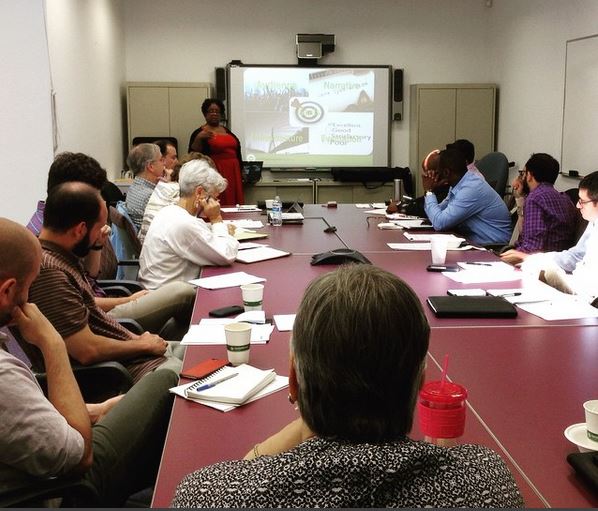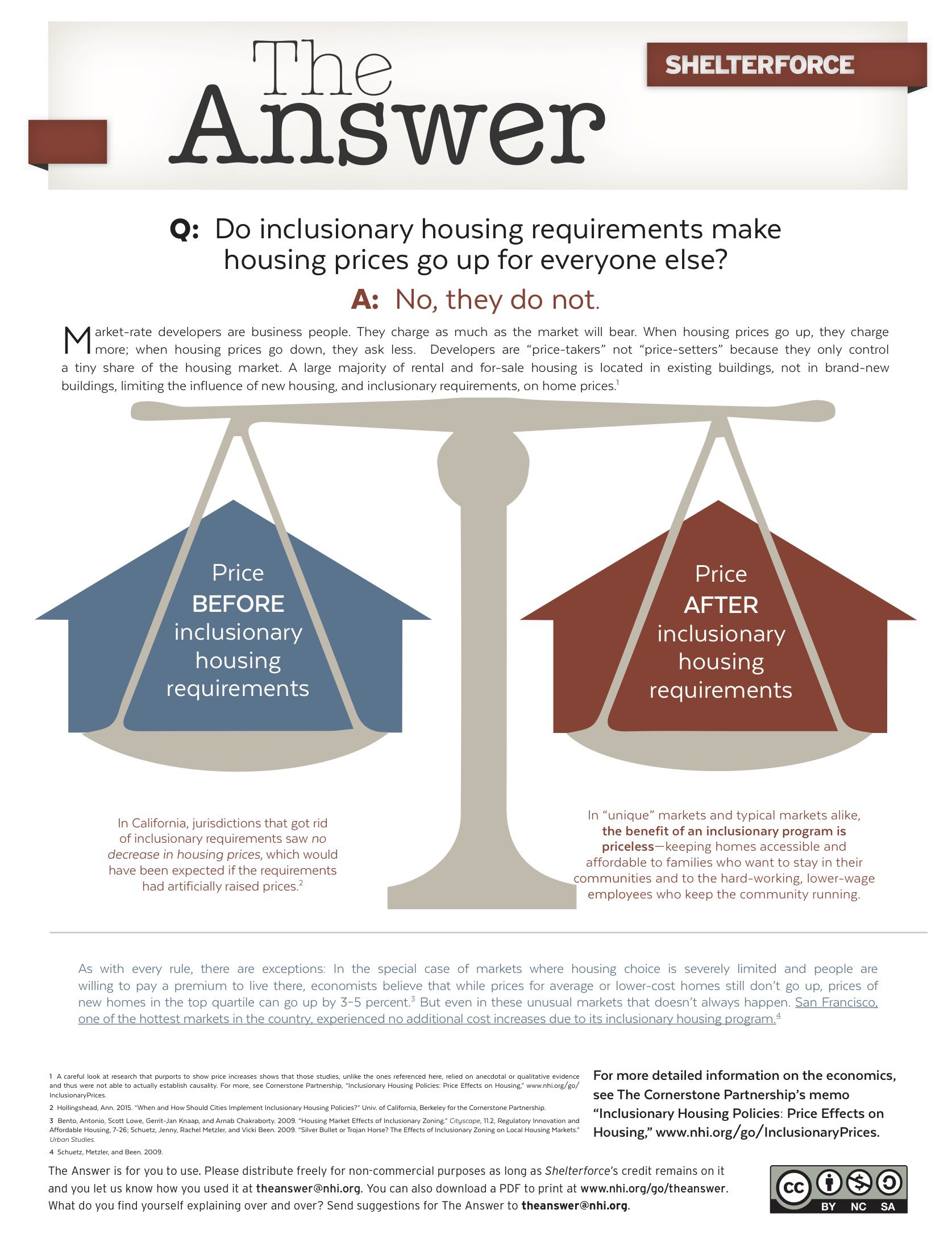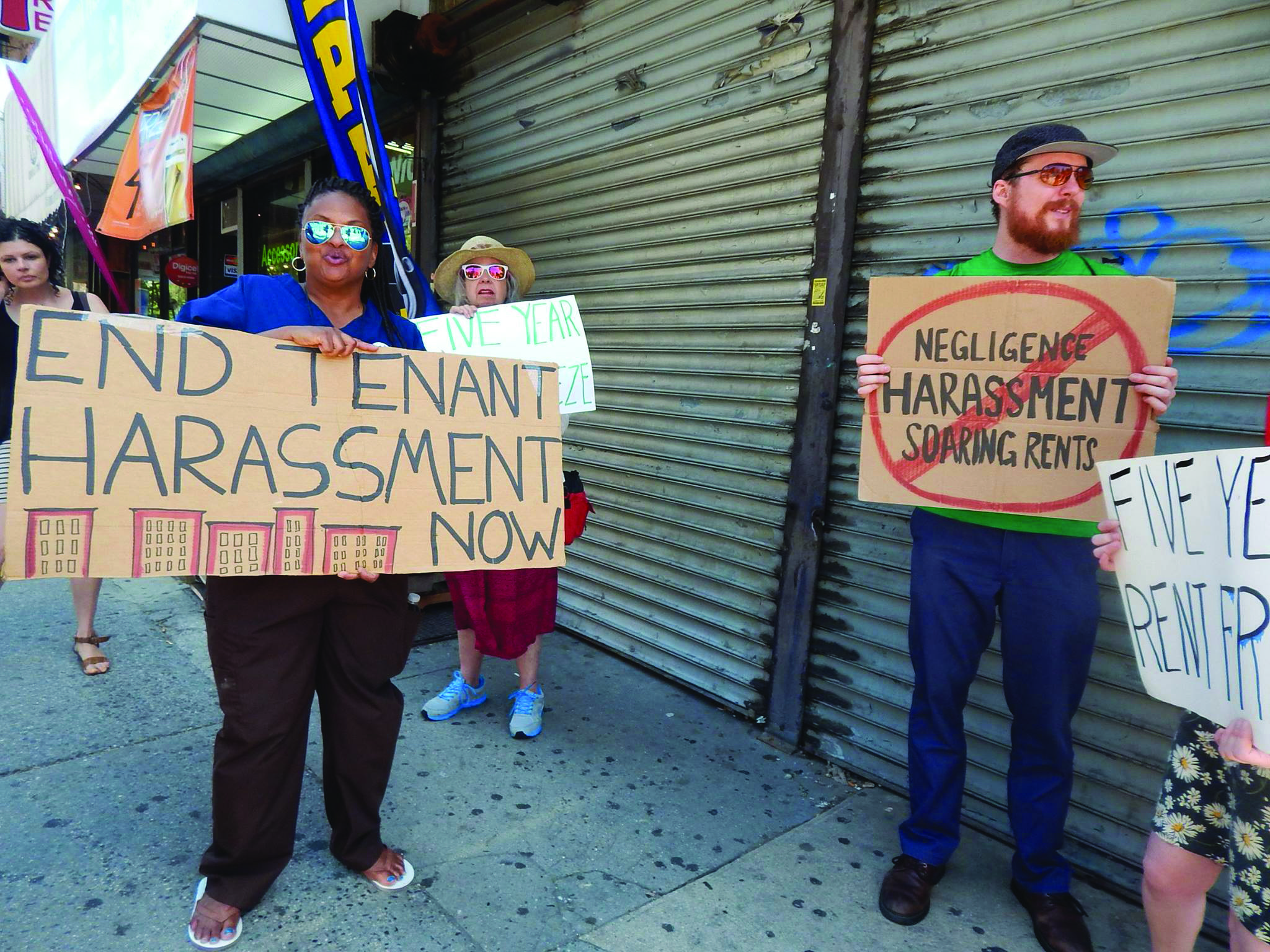In much of the country, there is an apparent chasm between the community development sector and fair housing advocates. The divide has been the subject of numerous recent articles and op-eds, which have generated a wide range of reactions—from some who feel that these articles rightfully bring to light long-running tensions to others who believe the articles are unfairly characterizing either side or unduly exacerbating those same tensions.
In New Jersey, we have taken a different approach and decided to work together to expand fair housing choice, promote comprehensive community revitalization, and preserve affordability in the face of gentrification—with great results.
Our collaboration goes back to the 1980s. It has strengthened over the past decade, starting in 2008, when our organizations, Fair Share Housing Center (FSHC) and the Housing and Community Development Network of New Jersey (HCDNNJ), worked together, with others, to end the state’s housing policy that permitted wealthier (and whiter) towns to pay lower-income communities (which tend to have higher concentrations of people of color) to take their fair housing obligations. (Since the state’s 1975 Mt. Laurel court case, every New Jersey municipality has had to plan and zone for its “fair share” of homes affordable to low- and moderate-income people.)
The so-called “Regional Contribution Agreements” that allowed trading away these obligations were long opposed by fair housing advocates for the way they encouraged segregation in cities and diminished opportunity in wealthier areas. However, RCAs had been supported by some community development advocates because they brought critically needed dollars to resource-starved cities. In practice, however, RCAs did not build homes or create more opportunities in lower-income areas either. One-quarter of all RCA funds were never spent, and the funds transferred often barely sufficed to replace a roof. CDC leaders who believed in the need to work regionally, supporting housing choices in suburban communities while improving opportunities in urban ones, worked to change opinions about RCAs in the sector. HCDNNJ, the state CDC association, joined the broad effort to end RCAs, alongside faith-based groups, civil rights organizations, and many others. Precisely because all of these groups could no longer be divided, we succeeded in eliminating RCAs.
Since then, FSHC and HCDNNJ have collaborated in other ways to build a strong state housing policy that combines building homes in high-opportunity communities and innovative tools for rebuilding urban neighborhoods. As a result, over 60,000 homes have been built in high-opportunity communities serving working families, low-income seniors, and people with special needs—many of which have created new opportunities for community-based nonprofits to serve more people in different ways. Nationally recognized neighborhood revitalization and rehabilitation policies, like the Neighborhood Revitalization Tax Credit (NRTC) and abandoned property tools, have driven new and more equitable investment in New Jersey’s cities. We have implemented new techniques to preserve affordability in the face of gentrification, like an innovative new inclusionary zoning ordinance in Hoboken, a small city across the river from New York City that provides a range of options to ensure that longtime residents share in redevelopment rather than being displaced.
We’ve also joined forces to reform the state’s process for allocating Low Income Housing Tax Credits (LIHTCs). We forwarded a joint proposal that goes beyond prior policies, which simply stated that some funding should go to urban areas and some to suburban areas. This encouraged a “race to the bottom” to build homes in neighborhoods where land costs were lowest, generally outside of a community-driven plan. Areas with better schools and job opportunities were bypassed. Under our joint proposal, developers are awarded more points if they build as part of a comprehensive community plan, such as those created by our state’s NRTC program, and/or if they target places with better schools and job access. The result has been a better distribution of funds that helps keep gentrifying neighborhoods affordable, provides more access to great schools, and supports comprehensive community development.
Our communication and collaboration were already in place when Superstorm Sandy struck, which helped us to move quickly and nimbly to secure crucial federal funding for the state’s recovery, and to ensure those funds were spent fairly and equitably. Months after the recovery began, it became apparent that the state was not delivering the funds as promised. Lower-income, African American, and Latino people affected by the storm were being ignored and displaced, especially renters, whether they lived in urban communities like Jersey City and Atlantic City, or predominantly white suburban communities such as Toms River. We fought together, alongside allies such as the Latino Action Network and the NAACP, for more funds for renters and lower-income homeowners, and made sure those funds went to the hardest-hit communities, both urban and suburban, building on the work we’d done around LIHTC.
The result, among other things, is nearly $600 million in federal funds dedicated to rebuilding rental housing for those affected by Sandy, which will lead to well over 5,000 new or replacement homes, every one affordable to low- and moderate-income families, seniors, and people with disabilities.
Having the Conversation
As colleagues who consistently work together to make sure that every New Jersey resident can afford to live in a great community and that every community lives up to its fair housing obligation, we are often surprised by the assertion that groups like ours cannot get along, that our missions and goals are at odds.
Our experience is exactly the opposite; because our core missions are mutually beneficial, we are stronger together. Whether it is securing a strong fair housing system that no longer includes legalized segregation, preserving state subsidies to create affordable homes, or winning improvements in the state’s response after the worst natural disaster in 100 years, we succeed together. We believe everyone is better off when we pursue a combined strategy that promotes strong communities with a range of housing choices everywhere.
It is not easy to get to that point. Diverse groups need to work together and have difficult but honest conversations about race and class in our communities. In the process of working together around issues, we build relationships across constituencies, expand our knowledge, and create trust among stakeholders from different perspectives. Now, when issues of racial segregation and economic inequality are more significant parts of the broader public conversation than they have been in decades, we need a frank, ongoing dialogue about opportunity in this country.
The realities of disinvestment in education and our broken, racially discriminatory criminal justice system are experienced daily by millions of Americans—and a wholly disproportionate share of the impact hits lower- income families, especially African-American and Latino families. It would be abandoning the missions of both community development and fair housing organizations to shy away from candid conversations about what happens every day in places around our state. We need to raise issues facing places like Trenton Central High School, where minutes from our state’s capital, teachers’ lessons are interrupted by rain pouring into classrooms and mice scurrying around classrooms and hallways, while 15 minutes away, in Princeton, students go to some of the best schools in America. It would do a disservice to people in the communities we work in to pretend that the violence in Camden does not make some parents afraid to let their kids play outside, while 10 minutes away, in Cherry Hill, residents have no fear of going for a run in well-maintained parks late at night.
When we talk about those disparities, we must be clear that the solution to them is a two-way street. Urban communities have significant assets that make them many people’s top choice for living, for reasons such as strong social connections, greater walkability, and proximity to mass transit. We should invest in those assets through comprehensive neighborhood development with strong, community-based organizations at the center. Comprehensive community development must have with broad resident-driven planning that supports infrastructure, schools, and jobs, not isolated affordable homes.
At the same time, we need to ensure that as these urban areas become revitalized, the economic returns in those neighborhoods are shared by the people who have lived there and want to continue to do so.
It is also true that many people prefer to live in suburban communities. That choice should be available to everyone, and it’s important to note that when the opportunity becomes available, there is far more demand than availability. For example, over 2,500 people applied for 140 apartments at Ethel R. Lawrence Homes, an affordable development in the high-income New Jersey suburb of Mount Laurel that resulted from the landmark fair housing litigation that bears the town’s name.
The fundamental challenge with the “either/or” argument is that these choices are inextricable from inequality around race and class. This is not a problem that falls neatly along urban-suburban lines. Older suburban communities such as Ferguson, Mo., that are experiencing rapid racial change, often accompanied by racial polarization similar to that seen in many urban neighborhoods a few decades ago, are becoming more common. Gentrification is creating urban neighborhoods that deliver on the promise of cities and repair decades- long problems, but too often it displaces the very people who stuck it out through those decades and worked to rebuild their communities.
Collaborative actions of the sort our organizations have taken, which help all communities and expand choices for people of all races, ethnicities, and incomes, and which the Affirmatively Furthering Fair Housing regulation from HUD will help build upon, are where our focus should be going forward. When fair housing and community development groups collaborate and deal honestly with issues of racial and economic segregation, the need for truly comprehensive community revitalization, and the challenges of gentrification, we can accomplish far more than we can on our own.






Comments